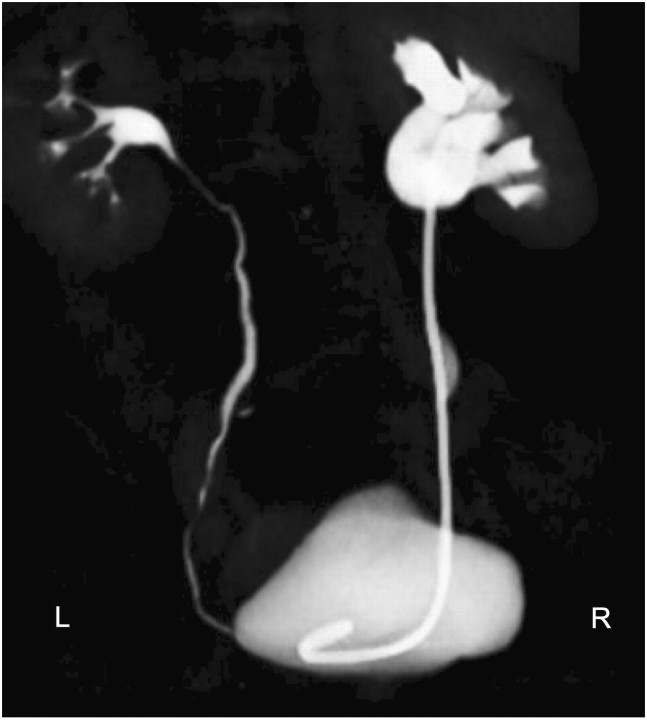Urinary tract rupture is often complicated by septic shock and has a high mortality rate. Although it rarely represents a diagnostic challenge, a spontaneous rupture with urinary extravasation is a rare event which, when associated with strange and confounding clinical presentation, may rapidly evolve into life threatening septic shock.
A 70-year-old patient presented with intense right leg and flank pain. Urine and blood routine laboratory tests were normal with no signs of inflammation. Standard abdomen X-ray was also normal while spine X-ray showed only spondylosis at L3–S1. Haemodynamic parameters were normal, and symptoms were suggestive of sciatica.
Just before discharge, the patient became pyretic (39°C) and despite the prompt introduction of antibiotic treatment, the patient rapidly developed hypotension and initial worsening of renal function. While the patient was haemodynamically supported with infusion of dopamine, abdomen computed tomographic scan showed the presence of 8.4-mm ureteral calculus near the pieloureteral junction (Figure 1, arrow). Subsequent contrast injection revealed at that level a spontaneous ureteral rupture with intraperitoneal urinoma formation (Figure 2), which was managed by double-J ureteral stenting (Figure 3) with amelioration of vital and renal function parameters. Haemoculture was positive for Escherichia coli and specific antibiotic therapy was established. Clinical and radiological follow-up showed recovery of the renal function, and 1 month later, the patient was discharged completely recovered.
Fig. 1.
Computed tomographic scan showing the presence of the stone (arrow) near the pieloureteral junction.
Fig. 2.
Computed contrast tomographic scan showing the urinoma formation at the level of the ureteral rupture.
Fig. 3.
Postero-anterior projection of a computed contrast tomographic scan showing the double-J stenting in the right urinary tract.
This case of spontaneous urinary tract rupture with strange and confounding clinical presentation underlines the importance of an early recognition of a rapidly evolving septic shock on its initial phase through an accurate evaluation of common symptoms, which could instead hide uncommon causes of life threatening disorders.
Conflict of interest statement. None declared.





